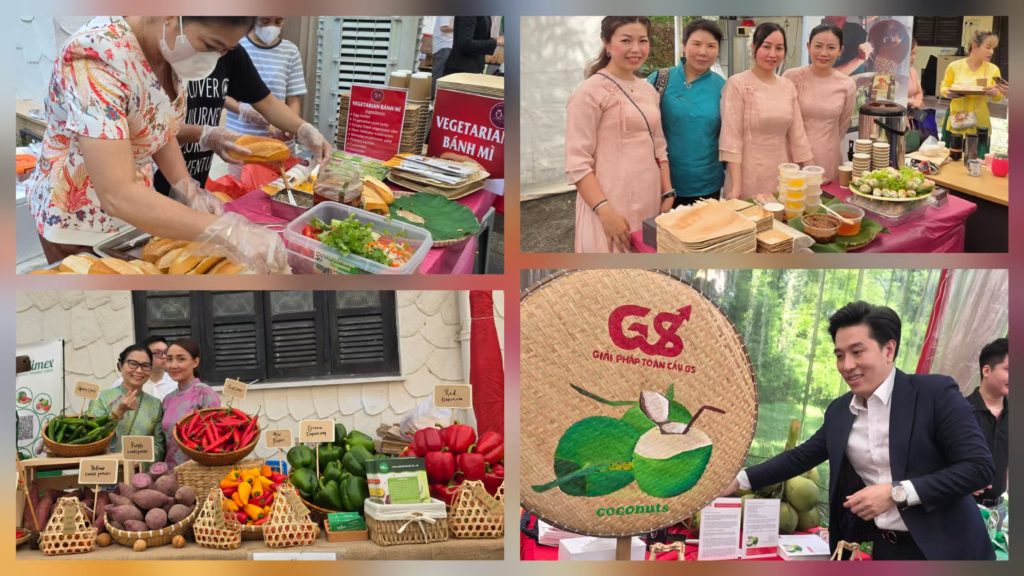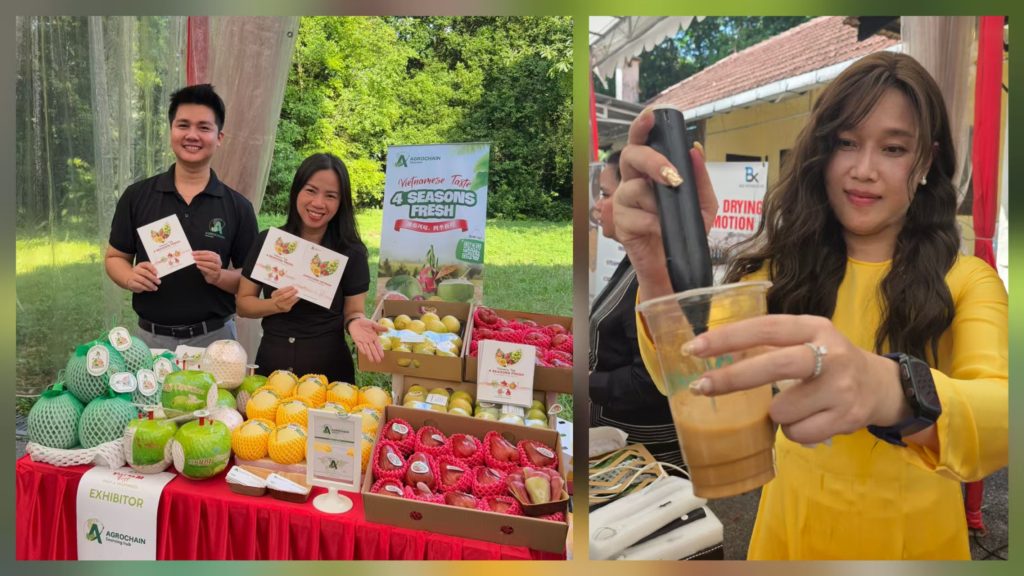(Singapore,18.07.2025) Whether it’s fresh fruits and vegetable on the supermarket shelves or seafood stir-fried on dinner plates, Vietnam’s contribution to Singapore’s food supply chain is increasingly evident. Today, at the Vietnam Embassy in Singapore, a “Fruits and Vegetables Festival” brought this connection into sharper focus: 11 Vietnamese agricultural enterprises engaged directly with Singaporean distributors, importers, and foodservice representatives to explore cooperation in areas such as distribution, processing, logistics, and innovation.

Vietnam’s fruit and vegetable exports reached a record US$7.12 billion in 2024 and are expected to surpass US$8 billion in 2025. Vietnam’s Ambassador to Singapore, Tran Phuoc Anh, noted that Singapore is one of Vietnam’s key export markets. With improved bilateral cooperation and supply chain integration, Vietnamese products such as durians, mangoes, bananas, sweet potatoes, and chilies are rapidly becoming mainstays in Singapore’s retail and culinary scenes.
Singapore’s food import strategy is not only marked by high dependency but also stringent standards. In his remarks, Leong Der Yao, Deputy Chief Executive of the Singapore Food Agency (SFA), emphasized that Singapore’s highly competitive market demands rigorous food safety and quality standards. Importers are concerned not only with regulatory compliance but also specific product specifications such as color, weight, and appearance. The government encourages foreign partners to align with these expectations to enhance their competitiveness in the Singaporean market.

A Vision in Question: The Future of Singapore’s “30 by 30” Goal
Over 90% of Singapore’s fruits and vegetables are imported, making the national food system highly vulnerable to global disruptions such as climate change, disease outbreaks, and geopolitical tensions. Hence, Singapore places strong emphasis on building resilient and diversified supply chains through stable regional partnerships.
In 2019, the government launched the “30 by 30” vision, aiming to produce 30% of the country’s nutritional needs locally by 2030—20% from fruits and vegetables, and 10% from protein sources such as fish and eggs. The urgency of this goal was magnified during the pandemic, when global supply chains faltered.
Yet the reality remains sobering. According to the latest data from the SFA, locally grown vegetables accounted for only 3% of total consumption in 2024, down from 3.2% in 2023. Local seafood self-sufficiency fell from 7.3% to 6.1% over the same period. While local egg production per hectare rose by 12.8%, and vegetable and seafood productivity increased by 1.8% and 5.4% respectively, the country’s agricultural output remains constrained by land—only 1% of Singapore’s land is zoned for farming.
The number of local farms has also declined, from 260 in 2021 to 225 in 2024. In May 2024, then Senior Minister of State for Manpower and Sustainability and the Environment, Dr. Koh Poh Koon, noted that the core question is not just whether the targets are met, but whether Singapore has laid the right foundation and whether the agri-food sector is heading in the right direction. The government is expected to reassess the feasibility of the “30 by 30” goal in the coming years.

Expanding Overseas Supply Chains: A Permanent Strategy
In this context, expanding overseas food supply chains remains a strategic necessity for Singapore. And among its partners, Vietnam stands out as one of the most promising.
Vietnam has over 8 million hectares of agricultural land and an estimated 8.6 million farmers. Fruit production alone amounts to 35 million tonnes annually, covering a wide range of tropical varieties such as bananas, mangoes, dragon fruit, citrus fruits, watermelons, and mangosteens—many of which are already widely available in Singapore. In addition to fresh produce, Vietnam is scaling up its exports of frozen, dried, and processed food products to meet Singapore’s demand for both quality and variety.
Cao Xuan Thang, Director of the Vietnam Trade Office in Singapore, added that Vietnam has more than 1 million hectares dedicated to vegetable farming, with an annual output of 20 million tonnes—yielding 19.2 tonnes per hectare on average. Major exports include root vegetables such as sweet potatoes and potatoes, along with high-demand culinary products such as chilies, herbs, and medicinal plants.
According to Tai Seng Yee, Vice Chairman of the Singapore Fruits and Vegetables Importers and Exporters Association(SFVIEA), the Association works with over 50 countries and regions worldwide—and Vietnam is among the most stable and fast-growing partners. While overall vegetable consumption in Singapore fell by 3% in 2024, local farms increased productivity from 227.2 tones per hectare to 231.4 tones, thanks to innovation and agri-tech—especially valuable given Singapore’s land constraints.
Vietnam’s contribution is not limited to fruits and vegetables. According to 2021 data, Vietnam was Singapore’s third-largest seafood supplier, accounting for 15% of total seafood imports. Of the 130,000 tonnes imported that year, only 25% came from Malaysia, 17% from Indonesia, and the rest from 78 other countries and regions. Vietnam’s role in providing protein sources is thus equally critical.
Singapore may boast one of the world’s most diversified food import networks, sourcing from 187 countries and territories. But the success of its food resilience strategy increasingly hinges on regional cooperation—especially with agricultural partners like Vietnam. The country’s long-term strategy is clear: to translate regional agricultural strengths into everyday food security and peace of mind for its citizens.





































